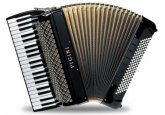"
We all talk about buying cells & testing, but not final assembly
How are you assembling to survive mobile/marine/harsh environments?"
Harsh environment according to that list is :
"Could also be understood as an environment for which an entity was not intended"
And a bunch specifications for spaceships.
For temperature above 125c lol..
I'm not sure about what type of products they talk about there,for sure not solar and batteries!!!
The part of "not intended"..
Yes.
Like I wrote, I never ever had my printer/copier with an ants nest before.
Big difference between Rural off-grid Isaan BKK or beach...
While even the coast area is standard harsh.
You don't have to believe me.
Just look at the state of the cars on the sea coast. Older cars.
Compare those to inland.
Sea salt (carried by the wind) is harsh on any (most) metal.
Include electronic devices.
Anyways...
Question was : What are you doing for your hash environment.
Sure, + 45 Celcius is not harsh according to your specifications,but it will kill your lead acid battery in a few weeks.
Who is to decide what is harsh?
Or what is electronics for that matter.
A lead acid battery clearly aren't according to the list.
Even Lifepo4 cells aren't electronics.
They need to withstand at least 125c
Only 125c and more is harsh environment according to that list.
(Or -50)
sea isn't harsh according to the list.
Unless you make gentle waves harsh..
Lol (joking here. Sea with the salt and the water drops, shaking, bumping.
I could say water drops are all over the globe. It's not that it's not on other locations, but the intensity and combination)
Best definition probably is
"anything that makes it decades faster then intended by the producer during regular use".
That can be movement, vibration, heat or cold beyond specifications, humidity, or dry (static electricity)
And bugs

I can assure you that most electronic devices will stop functioning way before the harsh spaceship condition's are ever met (+125 Celcius)
Not to mention your own body.
Also accurate is:
"Could also be understood as an environment for which an entity was not intended"
Everything outside specifications.
Temperature in the sun when the shade is 45...
Not nice.
Shaded area without wind...
Way above 45 degrees Celsius.
That makes it harsh environment.
It is outside the specifications of the lifepo4 battery.
And far outside the specifications of my MPPT inverter (max 40 Celcius)
Rodents and dust is everywhere..
Yeah sure. I know.
I'm not talking about a little.... but a lot of it.
How often do you need to clean the air-filters of your car?
We need twice a Month and replace every 3 months.
According to car companies.. that's harsh environment.
Most of my electronic devices don't have air-filters.
And we need to clean then regularly to have normal air cooling.(pressurised air)
When it rains, it rains a lot. With the high temperature comes high humidity..
The clay dust piled up inside become mushy wet clay.
Ever put soft, wet clay inside your inverter? Probably not.
Or can imagine the natural occurrence of having wet clay in your electronics.
I probably don't have to explain what it does to your electronic devices.
How many times a week do you repair electricity? As cables have been eaten?
Yes, we have 16 cats..14 dogs
Still a lot of rodents.
List can go on.
If you live in a city, you don't have this problem.
I never had them in The Netherlands, not even in the small village.
Sometimes a little of it, but never to this extend.
I probably even might react like you do now.. No idea what's it really like.
Mosquito are everywhere.. yes.
During rainy season I give blood at least 300 times a day.
No joking.
Lucky I have little to no reaction.
I don't mind. My wife and family don't even know different.
The rice fields are heaven for them, and the humans who live in the middle are a feast.
For someone who gets itchy easy after one mosquito bite...
Our location for sure is a harsh environment.
A friend of mine probably would need to go to hospital as he have a lot of reaction to bites....
It's not that it's only here...
It's the combination and quantity.
Anyways..
Topic starter did not ask a discussion about what is harsh. (Unless I read wrong)
But what we do when we find it harsh environment.
Our personal installations.
That's my understanding of the topic starter.
What's yours??
@Turd Furguson ..
Please inform us about your intentions of your question.
I read it as "what do you do for your abnormal installation to keep it safe"
@BiduleOhm reads it (so it feels for me) as opertunity to push his idea of harsh environment.
Probably he is building a Mars lander or satellite

(And that's a joke, not sarcasm)





